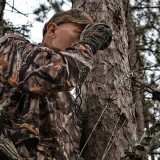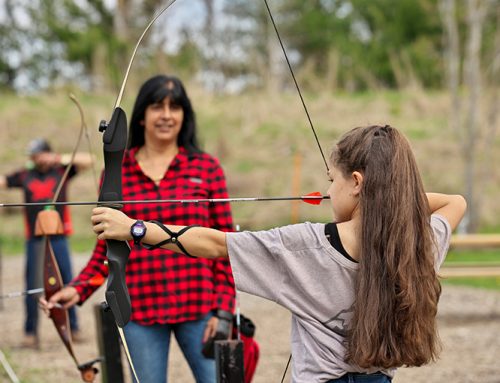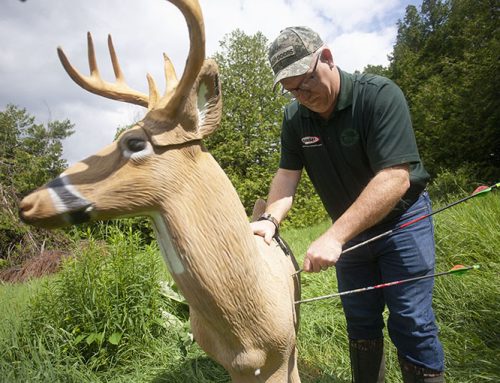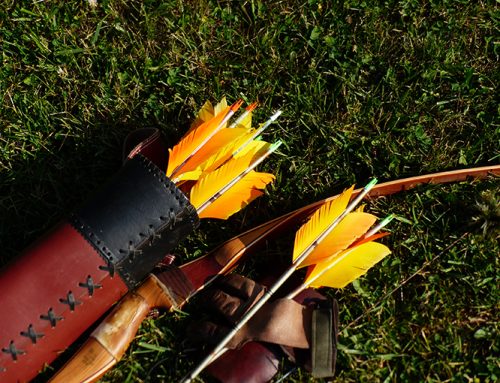
Few things are more important to a successful bowhunt than knowing the distance to your target. At typical hunting arrow speeds, an error of just 5 yards will result in missed vitals. Estimating yardage accurately is incredibly tricky, even with lots of practice. So it makes sense to take advantage of the amazing technology packed into modern laser rangefinders.
Any rangefinder will give you the distance to a solid object, but there are also some very sophisticated models available. There are models that can range an animal behind a screen of brush or in the pouring rain. Angle Range Compensation (ARC) adjusts for elevation, displaying both the actual distance and the horizontal distance. When shooting up or downhill, or from a tree stand, you only shoot the horizontal distance to the target, regardless of actual distance.
Many optics manufacturers offer range-finders in their product lines, such as Vortex, Wildgame Innovations, Simmons, Nikon, Zeiss and Leupold. Bushnell’s latest bowhunter-specific model, the Truth, features ClearShot Technology, which allows calibration of your rangefinder to actual arrow speed. When ranging an object or animal, ClearShot displays a red dot in the viewfinder corresponding to the highest point in the trajectory of your arrow, according to arrow speed and the range displayed. You’ll know instantly if you have clearance from any overhanging branches in your lane.
Plan (way) ahead
Get your stands up as early as possible, and cut shooting lanes at the same time. While there, put yardage markers in all your shooting lanes. This is best done by ranging back to the base of the tree while placing the marker. Use unobtrusive rocks or branches as markers instead of surveyor’s tape. One rock = 1st pin, 2 rocks = 2nd pin, and so on. Surveyor’s tape is a neon sign to tree stand thieves.
If you’re in an unfamiliar stand without yardage markers, start ranging memorable features as soon as it’s light enough to do so, keeping movement to the bare minimum — reviewing the spots as you sit: birch stump 27 yards; scrape, 32 yards; etc. If you forget one, laser it again. For me, trying to range an animal, then drawing, and making the shot, are way too many things to do in the few brief seconds that most opportunities at trophy game last. If its moving, how far did the animal go between ranging and full draw? Remember, an error of 5 yards equals missed vitals. It’s much better to have reference points on the ground and only range an actual animal as a last resort.
We’re getting spoiled
Even though I always have yardage markers around my stands, and I’m pretty good at range estimation, I never set foot in the woods without my rangefinder while hunting or setting up. It’s light, compact, accurate, and sure beats the heck out of my old system, which consisted of a level wind reel loaded with heavy Dacron line, with knots tied at 10-yard increments.
The article first appeared in the Fall 2014 issue of Ontario OUT OF DOORS. Subscribe now.






Leave A Comment